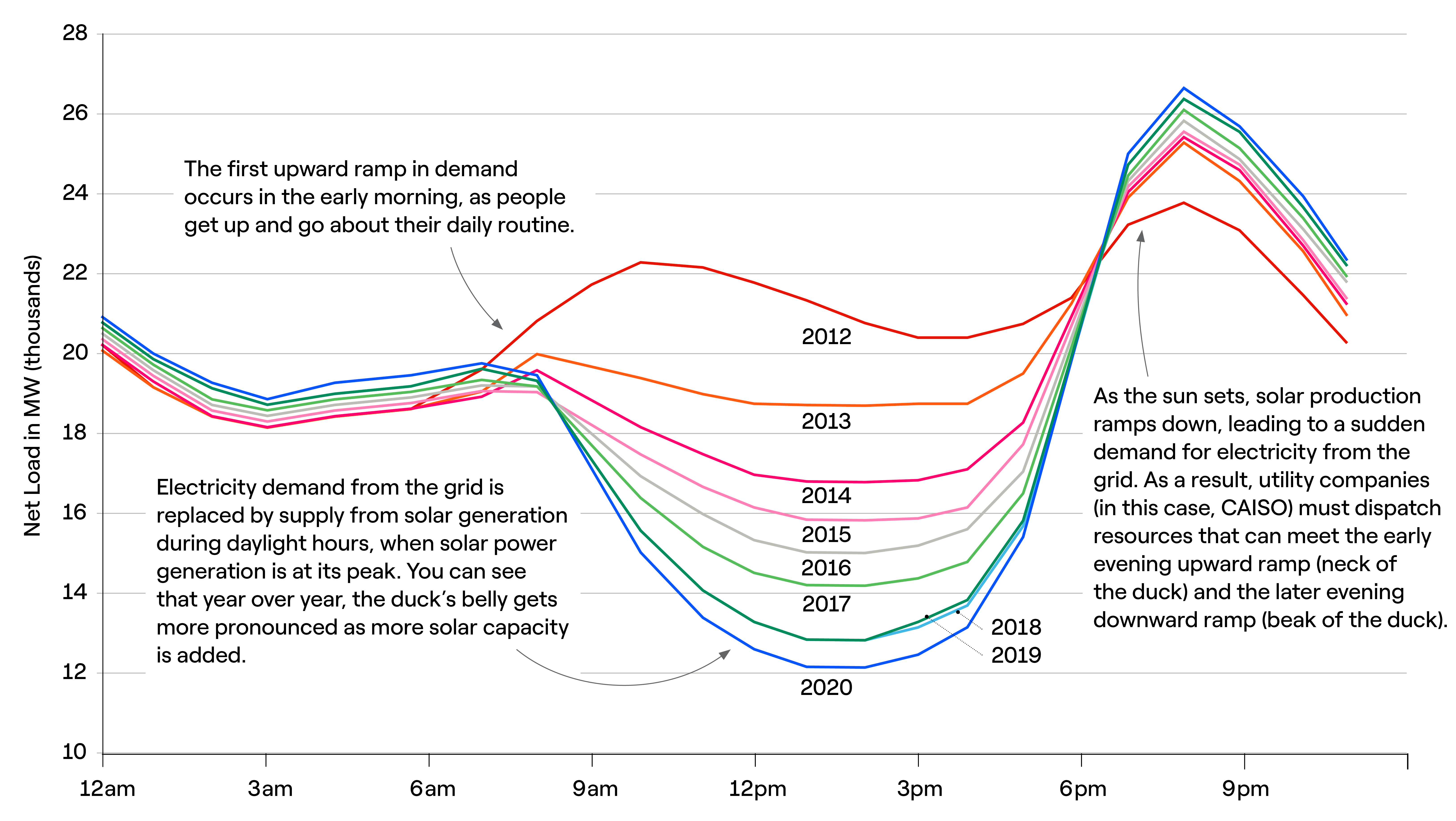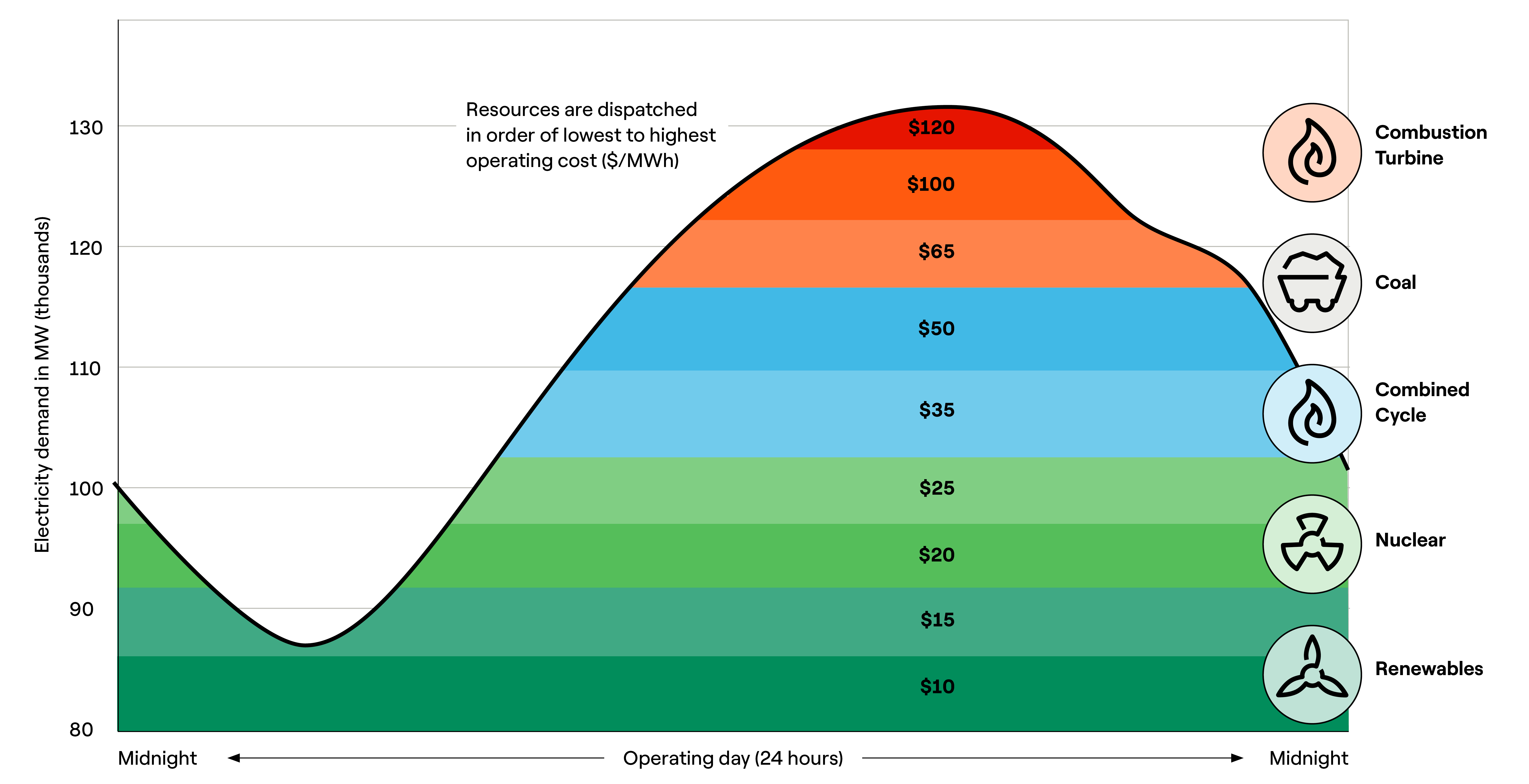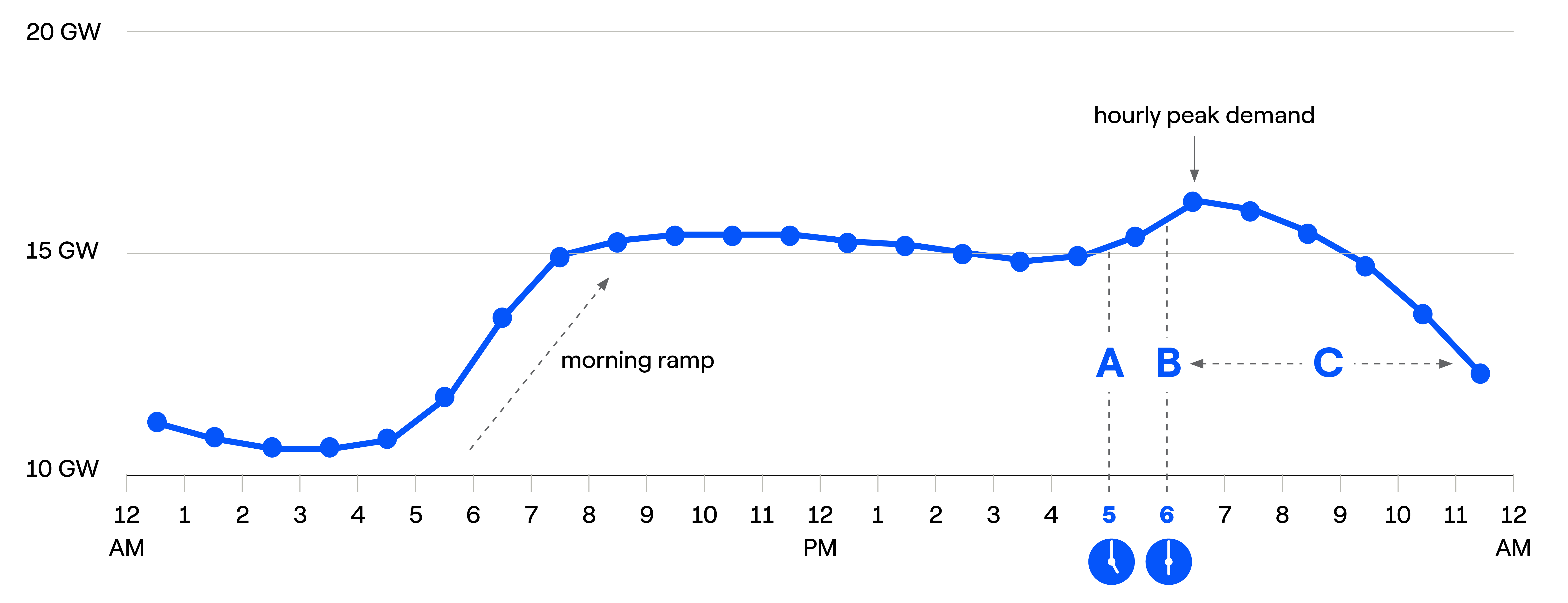Profiting from energy flexibility
Download our eBook to find out how to unlock the revenue potential in your energy infrastructure – and where you may already have that flexibility in your organization.
05 22, 2023
{{ content.description }}
At the individual site level, energy flexibility is the ability to reduce energy use or shift that usage to different times of day in response to external factors, such as requests by the grid operator. Flexibility requests and signals can come in a variety of forms – for instance, as outright requests in a program like demand response or implicitly through price signals like time-of-use rates, which organizations can take advantage of by shifting their energy usage to lower-priced hours with solutions such as automated energy storage.
Organizations that leverage their energy flexibility can earn new revenue and/or reduce energy bills, whether by avoiding energy usage during high-priced hours or capitalizing on grid programs and incentives. And the reduction in energy spend from unlocking your organization’s energy flexibility can be significant.
The opportunities to leverage energy flexibility are growing as the grid evolves. Grid operators are providing more financial incentives to encourage energy users to provide the flexibility needed to help them tackle these new challenges.
On the electric grid, electric supply and demand must always be matched – a highly complex exercise for grid operators. Such supply-demand balance is needed to ensure the safe and reliable operation of the grid. If an imbalance were to occur, local or even wide-spread brownouts or blackouts can occur.
Balance has traditionally been achieved through adjusting power generation on the supply side – that is, by turning industrial-scale power plants up or down. However, a diverse set of technologies on the demand side – like solar, battery storage, electric vehicles, and smart meters – are now available, enabling customer-sited resources or “distributed energy resources” (DERs) to integrate with the grid today. Because the grid was not built with these technologies in mind, DERs can create balancing challenges for grid operators, even as these necessary technologies help electrify and decarbonize the energy landscape in United States. The grid was designed for fossil fuels, not this diverse portfolio of energy sources, so the growth of DERs requires a shift in some approaches for grid operators.
DERs can also be a part of the solution, helping the grid remain in balance while supporting the expansion of robust technologies that will help decarbonize the nation’s energy landscape. For example, DERs can help address the famous “duck curve” issue. Due to the intermittent nature of renewable energy generation, large amounts of solar energy on the grid leads to the “duck curve” – where “net load,” or demand after accounting for solar production, is said to resemble the outline of a duck, with a deep belly during the middle of the day when solar production is strong, and a tall head during the evening hours, where net load is high.

Source: CAISO
Ensuring supply-demand balance during these steep net load changes is a growing challenge in much of the United States, as existing supply resources are not all able to instantaneously re-adjust. In fact, “duck curve” may no longer be the right name – the net load drop is now so steep, some have taken to calling it a “canyon curve.” At this point, the net load for the California Independent System Operator (CAISO) can reach zero or even sometimes go negative in the middle of the day. And while the duck curve once was a problem primarily with California, other states are now having similar issues (some observers have dubbed the net load changes in Texas “the armadillo curve”).
This challenge will only be exacerbated in the future, as intermittent solar and wind are expected to make up 53% of new capacity additions in 2023, the continuation of a years-long trend. Operating the grid reliably and responsibly will require incorporating technologies that complement each other – because in many cases, these DERs provide grid reliability measures while supporting the expansion of clean energy.
Historically, grid operators achieved the electricity supply-demand balance by adjusting electricity supply to match demand as it varies throughout the day. Think of a hot summer day, for instance, where demand for cooling ramps up for hours after the sun rises and temperature climbs. As demand for electricity increases, more and more resources are dispatched to meet this demand – you can see in the below graphic a typical order in which these resources are dispatched. Some of these resources are non-dispatchable renewable energy generation assets (like solar and wind) that are weather-dependent, and some are nuclear and coal plants that are always running. Eventually, these resources will include fast-responding natural gas “peaker” plants, power plants that run at times of high electricity demand (i.e., when demand is “peaking”).

Source: Illustrative example from PJM
But these peaker plants – which are specifically designed to meet system peaks – are often fossil-fuel intensive, expensive to build and operate, and are nearing their end of life. As a result, grid operators are focusing on energy flexibility as a more cost-effective and environmentally-friendly way of balancing supply and demand.
Energy flexibility is a solution that helps grid operators balance supply and demand on the demand side, rather than adding more generation on the supply side. When stress on the grid is high, instead of increasing electricity supply from the grid to meet consumer demand, grid operators instead lean on energy users to reduce their demand for electricity, ensuring supply-demand balance. To incentivize energy users to provide this needed energy flexibility, grid operators offer lucrative payments (in the form of demand response payments) or bill savings for organizations that can reduce or shift their energy use away from hours of highest stress on the local electricity grid.
Grid operators are most in need of flexibility when supply and demand struggle to meet. At times like these, there are a variety of ways that grid operators encourage customers to shift the time they use energy. In a typical day, for instance, many grid operators use time-of-use rates to charge customers more for using energy at times of high grid-wide demand. On high-demand days, or when there are frequency imbalances, demand response is leveraged to ensure supply and demand remain balanced. The utilities pay customers who are willing to reduce or modify their usage for a short period of time to maintain balance while reducing costs.
Consider below how grid operators employ a few important energy flexibility solutions to incentivize energy curtailment or shifting – and what actions are required. Organizations who understand and follow through with the incentivized actions can stand to gain significant economic value by leveraging these solutions to unlock energy flexibility.

Demand response (DR)
During periods of high demand, like a very hot day when demand for cooling overloads the grid, the system operator calls on supply and demand resources to rebalance the grid. Participating organizations are asked to curtail and receive payments for their efforts.
Demand management
During peak hours when the operations of large energy users overlap with peak load on the grid, their utility charges extra for usage – organizations can save money by shifting their usage to lower-priced hours.
Energy arbitrage
During the “evening ramp” hours in the duck curve when usage remains high but solar generation slows down, organizations can save money by shifting usage to lower-priced hours.
When organizations are flexible with their energy use, grid operators can more easily overcome the challenges they face. This is becoming more apparent around the world – when the United Nations’ Intergovernmental Panel on Climate Change released their Synthesis Report for their Sixth Assessment Report in 2023, there was notable emphasis on the importance of demand-side measures to prevent catastrophic levels of climate change.
Energy flexibility is lucrative for individual organizations, essential for grid operators, and beneficial for the planet. But many organizations may still hesitate because they think that capitalizing on flexibility will be too disruptive to their operations. Some may not know if they have flexibility they can leverage. And some may not even know where to start.
In our new eBook “Profiting From Energy Flexibility,” we go more into more depth on these tools and how organizations can use them to earn new revenue or reduce their energy bills. Download our eBook now to find out more about energy flexibility, where you may already have flexibility in your organization’s energy infrastructure, and what solutions are available to help maximize your opportunity.